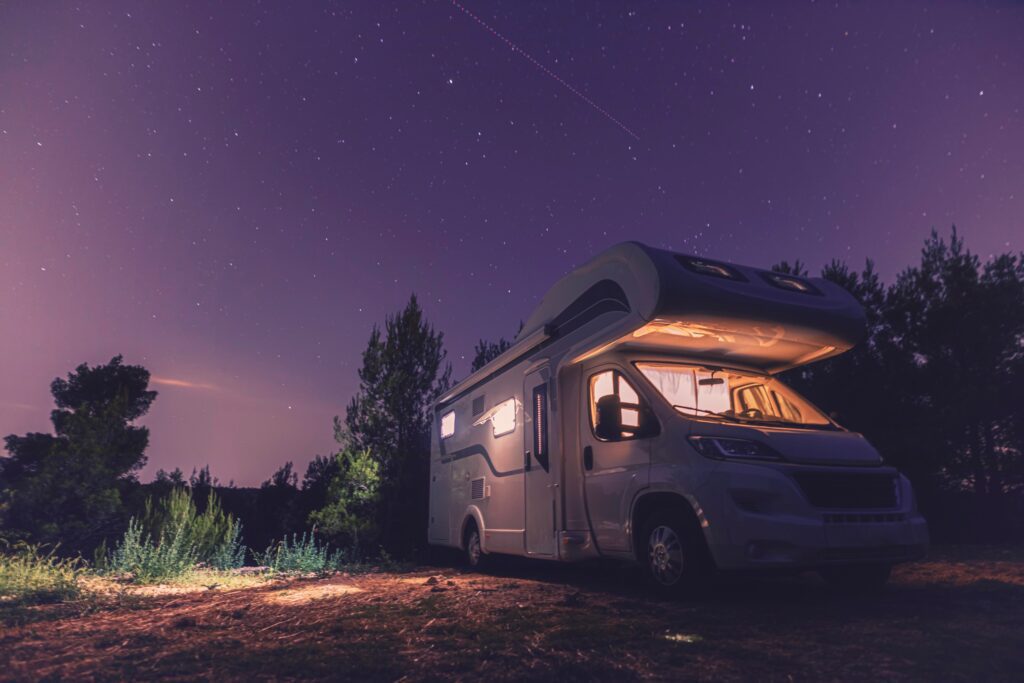Basics of an RV’s Electrical System

An RV’s electrical system is complex, integrating several key components to ensure it meets the demands of both vehicle operation and onboard living. Here’s an overview of the main components:
1. Battery System:
– House Batteries: These provide power for the RV’s living space when not connected to an external power source. They power lights, appliances, and other 12V systems.
– Chassis Battery: This powers the engine and vehicle-related systems like headlights and dashboard electronics.
2. Converter: Converts 120V AC power from shore power or a generator to 12V DC power, which charges the house batteries and powers 12V systems when plugged into an external power source.
3. Inverter: Converts 12V DC power from the batteries into 120V AC power, allowing you to use standard household appliances when you’re not connected to shore power.
4. Shore Power Connection: The external power hookup that allows you to plug into a campsite or home power outlet. Commonly provides 30-amp or 50-amp service.
5. Generator: Provides 120V AC power when shore power isn’t available. It can power appliances and charge the batteries.
6. Solar Panels (Optional): Convert sunlight into electricity to charge the batteries, providing a renewable power source when off-grid.
7. Power Distribution Panel: Acts as the control center for the RV’s electrical system, distributing power from the converter, batteries, or generator to various circuits throughout the RV.
8. Circuit Breakers and Fuses:
– Circuit Breakers: Protect the 120V AC circuits from overloads by cutting off power if a problem arises.
– Fuses: Protect the 12V DC circuits from overloads by breaking the circuit when necessary.
9. Wiring: The network of cables and wires that connect all electrical components, allowing power to flow to where it’s needed.
10. 12V DC System: Powers lights, fans, water pumps, and some electronics in the RV, ensuring functionality even when not connected to shore power.
11. 120V AC System: Powers household appliances like the microwave, air conditioner, and outlets when connected to shore power or running the generator.
12. Transfer Switch: Automatically switches the RV’s power source between shore power, generator, and inverter to ensure seamless operation.
13. Monitoring System: Allows you to track battery levels, power usage, and other critical system parameters to manage power efficiently.
These components work together to provide a reliable and versatile power system, enabling RVers to enjoy the comforts of home while on the road.
